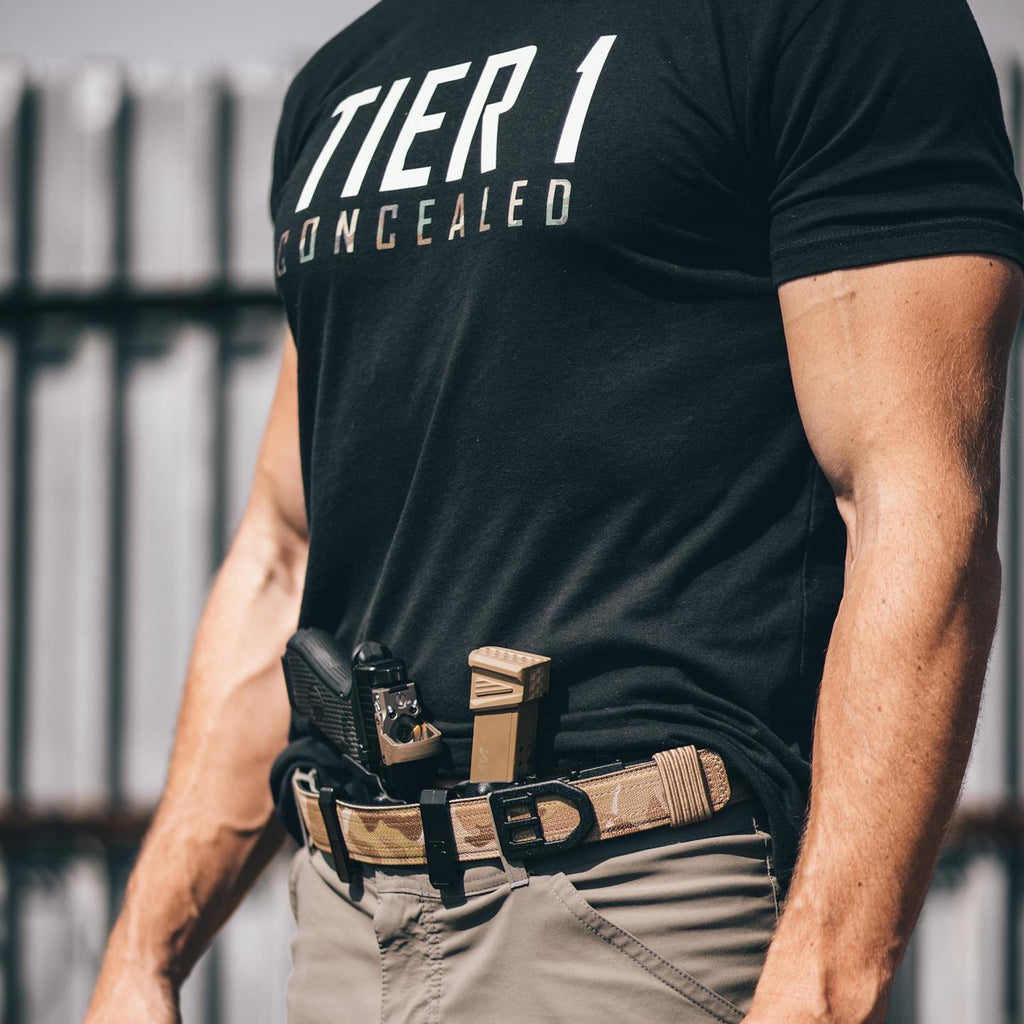Concealed carry is a significant responsibility, and avoiding common mistakes is crucial for ensuring safety and effectiveness. In this blog post, we’ll discuss the top 10 concealed carry mistakes highlighted in Tier 1 Concealed’s YouTube video and provide tips on how to avoid them.
Common Mistakes
1. Bad Holster or Wrong Holster
Choosing a poor-quality holster or one unsuitable for your carry location can lead to discomfort and increased risk of accidental discharge. Ensure your holster covers the trigger guard and is made from quality materials like kydex. It should also suit your specific carry position. Avoid leather holsters as they can wear down and cause issues such as poor retention and getting caught inside the trigger guard, potentially causing an accidental discharge.


2. Wrong Clothes and Bad Belt
Inappropriate clothing and belts can make concealed carry uncomfortable and noticeable. Avoid dressing in a way that draws attention to you. Instead, opt for sturdy belts and clothing that helps you blend in and effectively conceals your weapon. Flimsy leather belts are not ideal for concealment.


3. Prioritizing Comfort Over Effectiveness
While comfort is important, it shouldn’t compromise the effectiveness of your carry setup. Avoid carrying something so big and uncomfortable that it discourages you from carrying altogether. Ensure your setup is functional and secure.
4. Carrying Without a Round in the Chamber
Carrying without a round in the chamber can slow down your response time in a self-defense situation. Train to carry safely with a round in the chamber to be prepared for quick action.

5. Little or No Training
Regular training is essential to handle your firearm safely and effectively under stress. Seek training from reputable instructors for both firearms and medical skills to ensure you’re prepared for any situation.

6. Not Carrying Medical Equipment
Being prepared for medical emergencies is part of responsible carrying. Carry basic medical supplies like a tourniquet to be ready to handle emergencies.

7. Poor Gear Maintenance
Regularly clean and inspect your firearm and other EDC gear to ensure they function correctly when needed. Check your holsters and gear for loose or missing screws and make necessary adjustments.
8. Misunderstanding Sighting Systems
Familiarize yourself with your firearm’s sights and practice using them accurately. Understand the difference between iron sights and red dot sights, and ensure your sights are properly zeroed.

9. Following Trends Over Practicality
Don’t be swayed by popular trends. Choose gear based on your specific needs and reliability. Just because something is popular doesn’t mean it’s right for you. Conduct your own research and make informed decisions.
10. Ignoring Local Firearm Laws
Stay informed about the laws in your area to avoid legal issues and ensure responsible carrying. Understanding local regulations is crucial for safe and lawful concealed carry.
Choosing the Right Holster
The right holster is a critical component of a safe and effective concealed carry setup. Ensure it suits your firearm, covers the trigger guard, and is made from high-quality materials like kydex. Tier 1 Concealed offers a range of quality holsters designed to meet these standards.

Tips for Safe Concealed Carry
- Regularly train with your firearm and seek professional instruction.
- Maintain your gear and inspect it frequently.
- Carry necessary medical equipment.
- Stay informed about local laws and regulations.
- Choose clothing and accessories that help you blend in and conceal your weapon effectively.
Conclusion
Avoiding these common mistakes can enhance your safety and effectiveness as a concealed carrier. By prioritizing quality gear, regular training, and staying informed about local laws, you can carry responsibly and confidently. Tier 1 Concealed is here to support you with top-quality holsters and expert advice.



